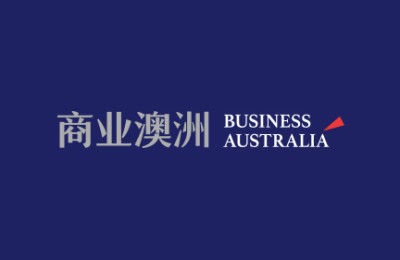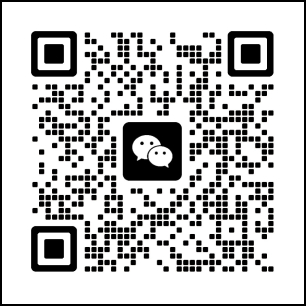200 年后,澳大利亚华人仍在证明他们属于这里
200 Years On, ChineseAustraliansAre Still Proving They Belong
SYDNEY, Australia — Out of a pile of papers on her dining table, Man-Yee Leanfore, 70, pulled out
one: a copy of an old immigration document from 1907.
澳大利亚悉尼——70 岁的曼伊·林弗(Man-yee Leanfore)从餐桌上的一堆文件中抽出了一份
1907 年的旧移民文件。
A young woman in a traditional Chinese dress stared out from the attached photos. Age: 29. Build:
Thin. Hair: Dark. Nationality: Chinese.
在文件上的照片中,一名身着中式裙装的年轻女子凝视着镜头。年龄:29。体型:瘦。头发:
黑色。国籍:中国。
The document permitted Mrs. Leanfore’s great-grandmother, Yuck Land Hing, to come and go from
Australia at a time when the White Australia Policy kept out most Asian immigrants. It was a limited
reprieve — a three-year exemption to the dictation test commonly used to exclude nonwhite
immigrants.
这份文件让林弗的曾祖母于兰馨(Yuck Land Hing,音)得以在白澳政策将大部分亚洲移民拒
之门外时往返澳大利亚。它是有限的缓刑——三年内免于接受常被用来排挤非白人移民的听写
测试。
“We suffered,” Mrs. Leanfore said as she looked at the photo, recalling the first in a long line of her
relatives who emigrated toAustralia. “But we didn’t do anything wrong.”
“我们吃尽苦头,”林弗看着照片说。她回忆起了历代移民澳大利亚的亲戚中的第一人。“但我
们没有做错什么。”
This year commemorates 200 years of Chinese migration to Australia. The anniversary comes at a
time when Australia is once again conflicted about its relationship with the region’s biggest, most
powerful country, and many Chinese Australians are digging into their families’ archives to share
their history with audiences from both China andAustralia.
今年是华人移民来澳 200 周年,正值澳大利亚再次与该地区最大、最有影响力的国家充满矛盾。
很多华裔澳大利亚人正在挖掘家族档案,以便与中国和澳大利亚的观众分享他们的历史。
注 中国高翻团队,专注 MTI 考研!考研课程报名或备考免费咨询,请联系微信 fwpben
3
注 中国高翻团队,专注 MTI 考研 近四年 ,考入学员 四 百多!
February’s Lunar New Year celebrations in Sydney featured talks from local historians.
Chinese-Australian history museums are planning new exhibitions that connect the story of the
Australia’s earliest Chinese immigrants to its newest, and community organizations are hosting
regular talks around Chinese figures in Australian history.
2 月的农历新年期间,悉尼当地的历史学家举办了多场讲座。华裔澳大利亚人历史博物馆正在
筹办把澳大利亚最早的华人移民的故事同最新的移民连接起来的新展览,许多社区机构也定期
举办有关澳大利亚历史上的华人的讲座。
Even in smaller towns and cities like Bendigo, where the Golden Dragon Museum has successfully
raised money to replace its historic ceremonial Qing dynasty dragon, Chinese Australians are
actively seeking ways to keep their culture alive.
即便是在像本迪戈(Bendigo)这样的小城镇里,华裔澳大利亚人也在积极地想办法保留自己的文
化。本迪戈的金龙博物馆已经成功地筹集到了资金,能够替换掉该博物馆源自清朝,具有历史
意义的仪式用龙。
Those who are involved say these activities are an effort to define their community on its own terms,
separate from debates over the influence of the Chinese Communist Party in Australia, and to ensure
that the public understands that not everyone who looks Chinese inAustralia is a new arrival.
参与其中的人说,这些活动是为了独立于有关中国当当在澳大利亚的影响力的讨论之外,用
自己的方式来定义他们所在的群体,并确保公众明白,在澳大利亚并不是所有看着像中国人的
人都是新来的。
“I think people, especially white people, lump us all as Chinese, as if everybody is the same,” said
Teik Hock Lim, 67, an ethnic Chinese, retired social worker, who grew up in Malaysia under British
rule. “It’s like if people would call all white people the same.”
“我觉得人们,尤其是白人,把我们都归为中国人,仿佛所有人都一样,”在英国统治时期的马
来西亚长大,现已 67 岁的华裔退休社会服务工作者林德福(Teik Hock Lim,音)说。“就像人
们认为所有白人都一样。”
Australia’s relationship to Chinese immigration has always zigzagged between rejection and
acceptance.
澳大利亚与华人移民的关系永远在拒绝和接受之间摇摆。
In 1818, Mak Sai Ying, a young man from Guangdong, stepped off a ship in Port Jackson, becoming
one of the first recorded Chinese immigrants to the continent. Given the Anglicized name John
Shying, he became a well-known pub owner in Sydney’s west.
1818 年,来自广东的年轻男子麦世英(Mak Sai Ying)在杰克逊港(Port Jackson)下船,成为有记
载的最早一批来澳华人移民之一。他起了一个听起来很英国的名字 John Shying,成了悉尼西
注 中国高翻团队,专注 MTI 考研!考研课程报名或备考免费咨询,请联系微信 fwpben
4
注 中国高翻团队,专注 MTI 考研 近四年 ,考入学员 四 百多!
边有名的酒吧老板。
When gold was discovered in the 1850s, a wave of new migrants from around the world arrived to
try their luck, including thousands of Chinese men from Canton.
19 世纪 50 年代发现黄金后,来自世界各地的新移民纷纷涌来碰运气,其中包括来自广州的成
千上万名中国人。
Out on the goldfields, competition for riches meant tension simmered between European and
Chinese miners. Riots broke out; in one instance, a mob of 3,000 European miners burned a Chinese
camp.
在金矿区,对财富的争夺令欧洲和中国矿工之间关系紧张。不时有骚乱爆发,在其中一起事件
中,一个由 3000 名欧洲矿工组成的团伙烧毁了一处中国人的营地。
To discourage immigration, Victorian ports levied a heavy tax on Chinese miners. But the most
resolved disembarked at South Australian ports and made the 500 km (310 mile) trek to the
goldfields on foot. Not all survived.
为了阻止移民,维多利亚州的港口对中国矿工征收重税。但最坚决的人在南澳大利亚州的港口
上岸,然后徒步跋涉 500 公里抵达金矿。并非所有人都能活下来。
Australia’s first federal parliament went on to pass legislation in 1901 that would require all
immigrants to pass a 50-word dictation test to enter the country. Because the test was enacted to keep
nonwhite immigrants out, there was an insidious twist: officials could test applicants in any
European language.
1901 年,澳大利亚第一届联邦议会通过立法,要求所有移民通过 50 个词的听写测试后才能入
境。因为实行测试是为了阻止非白人移民入境,因此暗中出现了一种变化:官方可以用任意一
种欧洲语言测试申请人。
After a while, “there was never a Chinese person who could pass it,” said Daphne Lowe Kelley, a
community leader and former President of the Chinese Heritage Association of Australia. Unable to
enter Australia in the 1920s, Ms. Lowe Kelley’s father sailed to New Zealand instead, paying a tax to
settle there.
之后一段时间,“没有一个中国人可以通过测试,”社团领袖、前澳洲华人历史文物会(Chinese
Heritage Association ofAustralia)会长刘瑞馨(Daphne Lowe Kelley)说。20 世纪 20 年代,因为无
法进入澳大利亚,刘瑞馨的父亲乘船去了新西兰,在那里交税后定居。
Those of Chinese descent who were already in the country, like Mrs. Leanfore’s great-grandmother,
could apply for an exemption from the test in order to travel. But many, with families still living in
China, simply gave up and returned home, including Mrs. Leanfore’s grandmother who returned to
Guangzhou.
注 中国高翻团队,专注 MTI 考研!考研课程报名或备考免费咨询,请联系微信 fwpben
5
注 中国高翻团队,专注 MTI 考研 近四年 ,考入学员 四 百多!
那些已经在澳大利亚的华裔,比如林弗的曾祖母,可以申请免试旅行。但许多仍有家人住在中
国的申请者,干脆放弃并回了老家,包括林弗的祖母,她回到了广州。
In the decades following 1901, the Chinese population declined.
1901 年以后的几十年里,华裔人口减少了。
Race-based policies remained in place until 1973, when the government heralded a policy of
multiculturalism.
基于种族的政策一直持续到 1973 年,当时政府宣布了一项多元文化政策。
Now there are about 1.2 million people inAustralia with Chinese ancestry.
现在,澳大利亚有大约 120 万人拥有中国血统。
For years, older Chinese Australians have nursed the painful legacy of the White Australia Policy.
Now, after 200 years, they see their community as a patchwork of experiences.
多年来,老一辈的澳大利亚华裔承载着着澳大利亚白人政策的痛苦遗产。200 年后的今天,他
们把自己的社群看作各种经历的混合体。
It includes the descendants of Cantonese and Hakka migrants from the Gold Rush era, ethnic
Chinese refugees who fled the Vietnam War, migrants from Hong Kong, Macau, Taiwan and
mainland China who have arrived steadily since the 1980s, and most recently — an influx of Chinese
international students.
其中包括淘金热时期的广东移民和客家移民的后代,逃离越南战争的华裔难民,自 20 世纪 80
年代以来持续抵达的香港、澳门、台湾和中国大陆的移民,以及最近涌入的中国留学生。
Nick Shying, 22, is one of many Chinese Australians whose roots reach back to that first Chinese
settler — despite his pale skin and blue eyes. He said people often laugh when he brings up his
Chinese heritage. Australians still use appearance as a basis for ethnic assumptions, he said, “but here
I am as an example of the potential flaws of taking that approach.”
22 岁的尼克·世英(Nick Shying)是许多可以追溯到第一代华人定居者的澳大利亚华裔——尽管
他皮肤白皙,眼睛湛蓝。他说,当他提到自己身上的中国遗产时,人们经常笑。他说,澳大利
亚人仍然把外表作为种族假设的基础,“但我的例子说明了采用那种方法可能存在的缺陷。”
Many community leaders say these nuanced identities are once again being overlooked and
oversimplified as the public focuses on new waves of immigration.
许多社群领袖表示,随着公众更关注新一波的移民,这些身份的细微差别再次被忽视和被简单
注 中国高翻团队,专注 MTI 考研!考研课程报名或备考免费咨询,请联系微信 fwpben
6
注 中国高翻团队,专注 MTI 考研 近四年 ,考入学员 四 百多!
化了。
Part of the reason may be that Australia still considers itself a white nation, said Kate Bagnall, a
historian at the University of Wollongong. “That’s a really powerful image that’s really difficult to
shift,” she said.
伍伦贡大学(University of Wollongong)的历史学家凯特·巴格纳尔(Kate Bagnall)说,部分原因可
能是因为澳大利亚仍然认为自己是一个白人国家。“这是一个非常强大的形象,很难改变,”
她说。
And with the Australian government fending off allegations of political interference from the
Chinese government, some worry this ignorance of history will spur an anti-Chinese backlash.
随着澳大利亚政府阻挡据指是来自中国政府的政治干预,一些人担心这种对历史的无知会激起
反华的反弹。
“There are some of us in the community who feel this is shades of the White Australia Policy coming
back again,” said Ms. Lowe Kelley, a former president of the Chinese HeritageAssociation.
“社群里有一些人觉得,这是澳大利亚白人政策的阴影卷土重来,”澳洲华人历史文物会(Chinese
HeritageAssociation)前会长刘瑞馨(Lowe Kelley)表示。
She added that when she reads news singling out Chinese political donations and investment, she
worries that it will filter down: “What happens is it tars the whole of the Chinese community.”
她补充道,当她读到专门针对中国政治捐赠和投资的新闻时,担心其影响会逐渐扩散渗入:“它
让整个华人社会遭受污名。”
Of the many Chinese Australian historical organizations she has been involved with, none receive
funding from the Chinese government, she said.
她说,在她参与的众多澳大利亚华人历史组织中,没有一个得到了中国政府的资助。
Others involved in the revival of Chinese Australian history also said they steer clear of Chinese
officialdom.
其他参与澳大利亚华裔历史复兴的人也表示,他们避开了中国官方。
Mark Wang, the deputy chairman of the Museum of Chinese Australian History in Melbourne said
the goal is to remain impartial, relying on state government funding, ticket sales and community
donations.
墨尔本澳华历史博物馆(Museum of Chinese Australian History)的副馆长王兴乡(Mark Wang)表
示,他们的目标是保持不偏不倚,依靠州政府资金、门票销售和社区捐赠。
注 中国高翻团队,专注 MTI 考研!考研课程报名或备考免费咨询,请联系微信 fwpben
7
注 中国高翻团队,专注 MTI 考研 近四年 ,考入学员 四 百多!
“We don’t want to be distorted by a political undercurrent,” Mr. Wang said. “We’re about Australian
history. We’re not about Chinese history.”
“我们不想被政治暗流所扭曲,”他说。“我们是关于澳大利亚历史的。而不是关于中国历史的。”
For families closest to that history, the past is a bittersweet mystery that should never stop being
reinterpreted and retold.
对于最接近那段历史的家庭来说,过去是一个苦乐参半的谜,永远无法停止被重新诠释与讲述。
Mrs. Leanfore’s son, Ken, 31 is a photographer. Tired of fielding questions about his unusual last
name, he recently curated an exhibition using stories of Chinese Australians with names that were
Anglicized by immigration officers.
林弗 31 岁的儿子肯(Ken)是一名摄影师。因为厌倦了他那不寻常的姓氏引起的好奇,他最近策
划了一个展览,讲述那些名字被移民官员英语化的澳大利亚华人的故事。
On a recent afternoon, in the family home her ancestors bought in 1928, Mrs. Leanfore sipped tea
with her husband and son, as a pack of grandchildren chased each other through the house.
不久前的一个下午,在她祖先 1928 年买下的那栋家庭住宅里,林弗和丈夫、儿子一起喝茶,
一群孙子孙女在房子里互相追逐玩耍。
“None of them are pure Chinese,” said Mrs. Leanfore, smiling. “But that’s what the future is going to
be.”
“他们没有一个是纯正的中国人,”林弗微笑着说。“但未来就是这样的。”
转载于:https://www.cnblogs.com/wanghui626/p/9653080.html
原文链接:https://blog.csdn.net/weixin_30776545/article/details/99929476?ops_request_misc=%257B%2522request%255Fid%2522%253A%2522169103947416800227416207%2522%252C%2522scm%2522%253A%252220140713.130102334.pc%255Fblog.%2522%257D&request_id=169103947416800227416207&biz_id=0&utm_medium=distribute.pc_search_result.none-task-blog-2~blog~first_rank_ecpm_v1~times_rank-16-99929476-null-null.268%5Ev1%5Ekoosearch&utm_term=%E6%BE%B3%E6%B4%B2%E7%95%99%E5%AD%A6%E7%A7%BB%E6%B0%91

